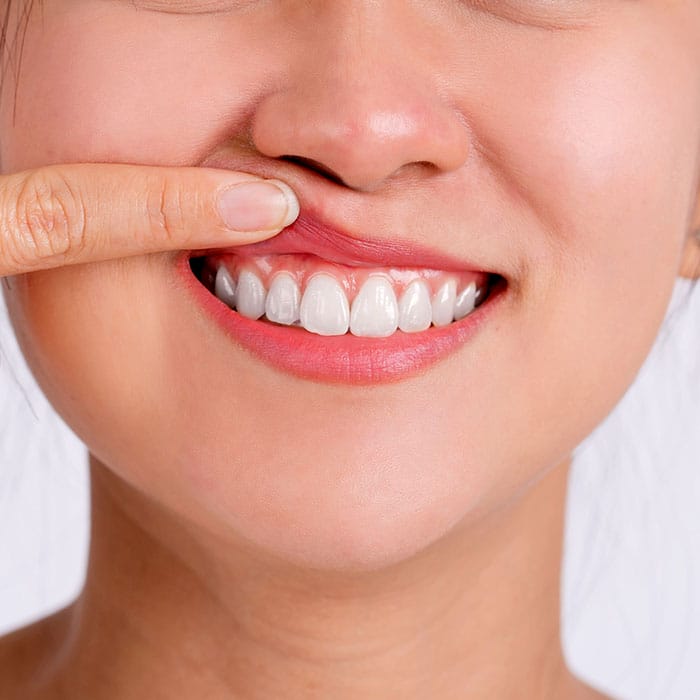AROUND 35 MILLION people in the US are affected by temporomandibular joint disorder (TMD or TMJ), which is why we’re observing TMJ Awareness Month. Our jaws get an almost constant workout throughout the day. We open and close our mouths over and over to talk, chew, and yawn. For most people, all of the anatomy in the joint works the way it should and these are all easy tasks to perform, but sometimes something can go wrong.

The Anatomy of the Jaw Joints
The hinge joint on either side of the jaw, located between the cheekbone and ear, has three components: the socket in the temporal bone, the ball at the top of the jawbone, and a small fibrous disk acting as a cushion between the two. The ball and socket are each covered in cartilage to make the movement comfortable and smooth.
If the fibrous disk shifts out of its correct alignment or erodes, if arthritis wears away the cartilage, or if the joint is damaged in a traumatic injury, the result could be TMD.
Common Symptoms of TMD
The symptoms of a problem with the temporomandibular joint often include:
- A grating sensation when chewing, or clicking and popping sounds in the joint
- Tenderness or pain in the jaw
- Pain in one or both jaw joints
- Painful or difficult chewing
- Aching pain around the face
- Pain in and around the ear
- Locking of the jaw joint, making it difficult to open or close the mouth
Quick Tips for TMD Relief
There are several things we can do at home to relieve TMJ discomfort:
- Avoid extreme jaw movements when singing or yelling, when possible
- Control yawns by pressing a fist beneath your chin
- Stick to small movements while chewing
- When resting, hold your teeth a little apart instead of fully closing your jaws. (This is the natural resting position of the jaw, whether lips are open or closed.)
How TMD Is Treated
Most cases of TMD are temporary and resolve on their own after a week or so, but not always. If your symptoms persist, and particularly if they get worse, then your jaw likely needs treatment. Treatments we may recommend include ice packs, exercise, moist heat, medication, and splints. If none of these helps, ultrasound treatment, trigger-point injections, or transcutaneous electrical nerve stimulation (TENS) would likely be the next steps. Extreme cases can be treated with jaw surgery.
Let Us Know About Your TMD Symptoms
If you’ve experienced any of the symptoms listed above, don’t leave Dr. Lavrisa out of the loop! Make sure to tell us about your symptoms when you come in for your regular appointment, and if that’s too far away, schedule one specifically to discuss them with us! All About You Dental Care can discover what’s causing the problem and recommend the best steps to take next.
Let’s defeat TMD together!
Top image used under CC0 Public Domain license. Image cropped and modified from original.







